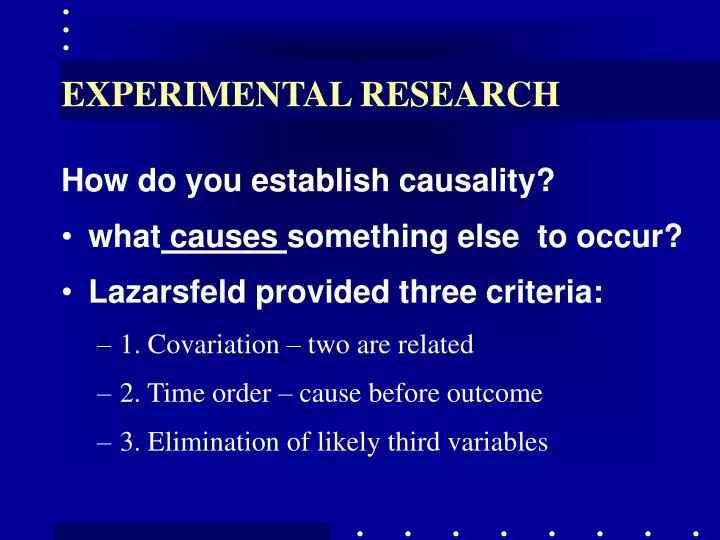
An entity, after exposure to the change agent, is compared in a thought experiment with the same entity had there been no exposure. As by definition public health sciences entail an obligation to population health, among causes they must needs include contextual factors such as the more or less steady state conditions of sex or social position or climate or location, which can seldom be structured experimentally to produce change.Ĭonfounding occurs where an apparent association between a presumed causal variable and an outcome is in fact accounted for by a third variable, or “common cause” not in the postulated causal pathway such a variable must be itself associated with both presumed cause and outcome.Ĭonnection is one of three essential properties of cause specified by Hume 1 and, being the most difficult to establish, is also the most crucial (see Direction, a synonym, for definition).Ĭounterfactual logic 19 limits causes to change agents (thus excluding steady state conditions) and demands formulations of causal relations amenable to mathematical logic. Some philosophers, and epidemiologists drawing largely on experimental sciences, require that causes be limited to well specified and active agents producing change. 9-22Ĭausality describes the property of being causal, the presence of cause, or ideas about the nature of the relations of cause and effect.Ĭausation means either the production of an effect, or else the relation of cause to effect.Ĭauses produce or occasion an effect. An extensive philosophical literature considers the questions involved, 1-8 as does a more recent epidemiological literature. With the exception of antagonistic causes acting simultaneously, as in feed back systems, absence of association refutes causality.Ĭausal inference is the thought process that tests whether a relation of cause to effect exists.



In epidemiology, other criteria such as consistency upon replication are also important. Association of any presumed cause with its presumed effect is judged statistically by the presence and strength of probabilities based on preset expectations of variation (so called chance occurrence). Association is one of three properties of cause described by Hume.


 0 kommentar(er)
0 kommentar(er)
